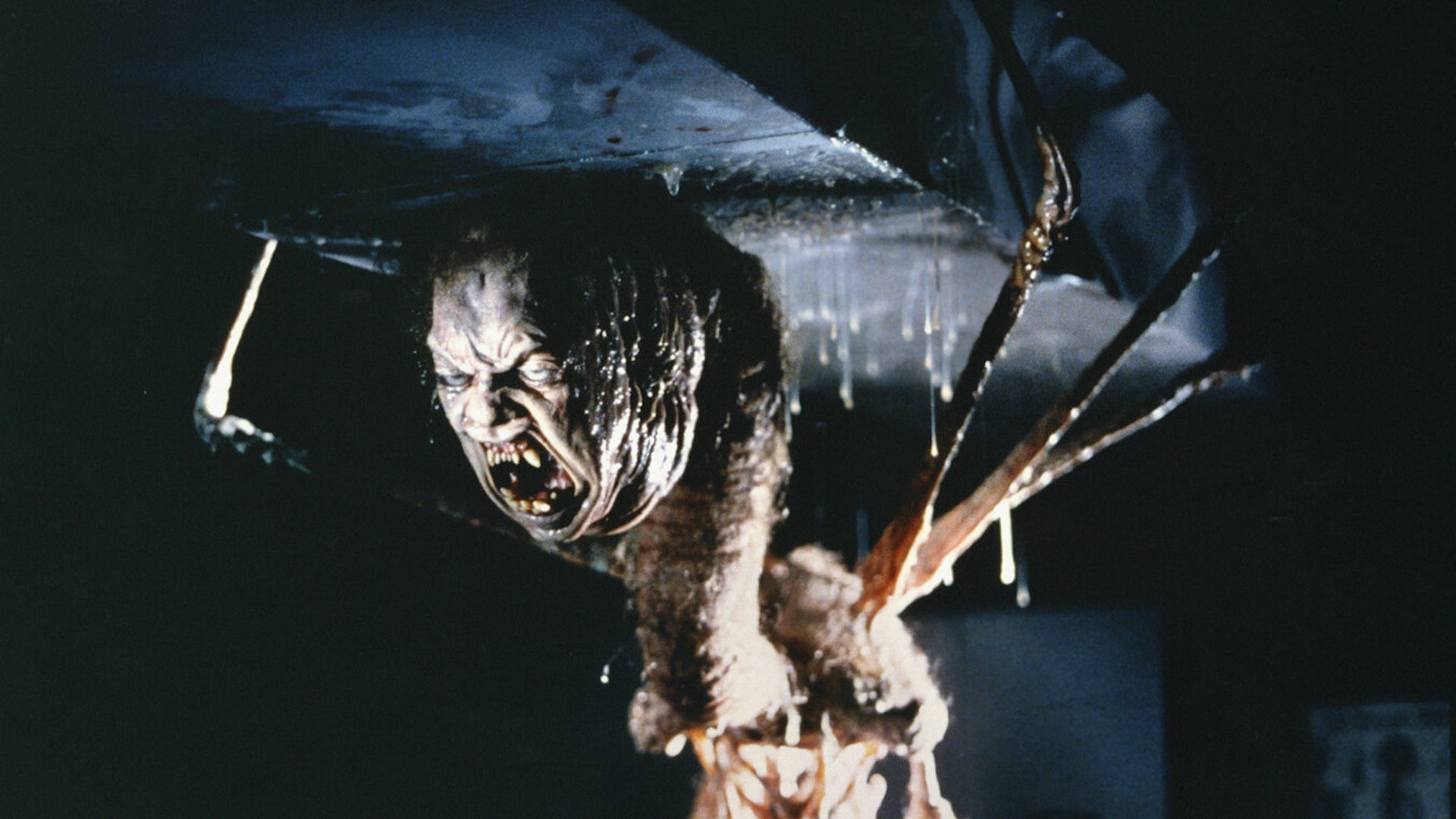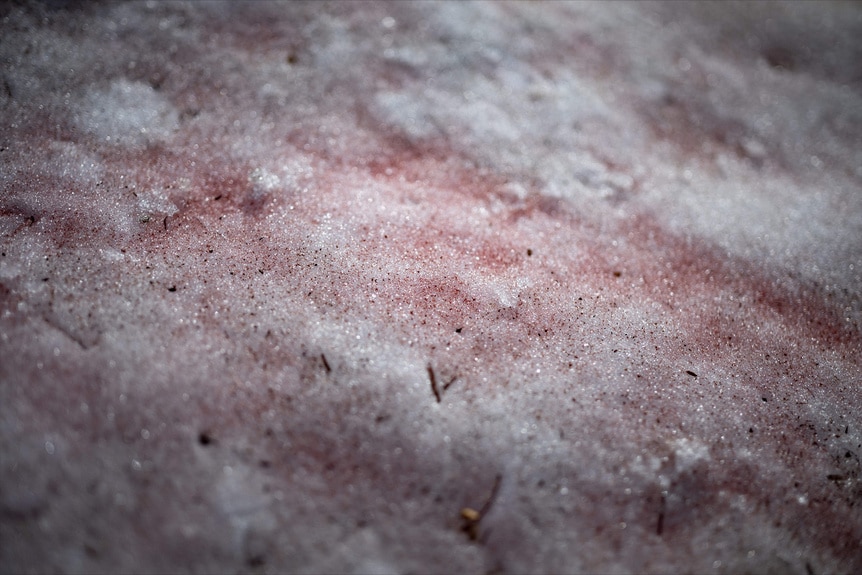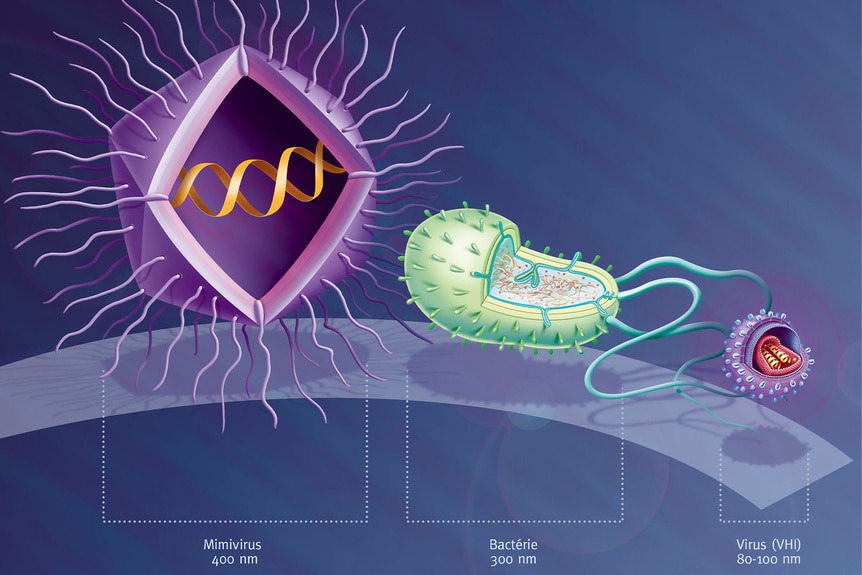Are Giant Arctic Viruses Combatting Climate Change?
Scientists have found DNA from giant algae-eating viruses on the Greenland ice sheet.

In John Carpenter’s 1982 horror classic The Thing, researchers at an Antarctic science station stumble upon a shapeshifting alien entity, resurrected after being frozen in the polar ice. Since the film’s release, scientists have uncovered strikingly similar events happening in the real world, only at a smaller and less violent scale.
As climate change ratchets up the global thermostat, melting glaciers and ice sheets, some ancient organisms previously lost to time are re-emerging. Reports of time-jumping plants and microbes have left some scientists and the general public worried that thawing ice might reawaken something more Thing-like. Now, researchers have uncovered giant viruses living on the frost, but it looks like they’re on our side!
For More on Viruses:
Scientists Pulled a New Type of Virus from the Deepest Spot in the Ocean
First Known "Vampire" Virus Latches onto the "Necks" of Other Viruses to Survive
Melting Permafrost Could Unleash Time Traveling Pathogens
Ancient Plants, Animals, and Microbes are Thawing from a Frozen Slumber
Over the last couple of decades, scientists have uncovered all kinds of organisms frozen in ice all over the world, who happily resume walking the Earth once thawed. In 2012, scientists announced they had recovered fruit from the Siberian permafrost, buried for more than 30,000 years. They identified 70 hibernation burrows along a riverbank, in the same layers of strata which house mammoths and other ancient fauna.
The burrows were used by ancient squirrels to live in over the winter, alongside the food they hoarded during the growing season. Those squirrels tucked their winter stashes into the coldest parts of their burrows, which subsequently froze over and never thawed again. They were still sitting there, waiting for the squirrels to return, when scientists found them. After thawing, researchers were able to grow new plants from the fruit. Interestingly, they grew the new plants not from mature seeds but from the fruity tissues which were protected from the cold by their sugars.
In another study, researchers resurrected a nematode (a type of microscopic worm and one of the most successful organisms on the planet) from roughly 46,000 years ago in the late Pleistocene. It’s an exciting time for the study of biology and evolution, being able to compare ancient organisms with their still living modern counterparts, but there is some concern that melting ice might reawaken something sinister.
Giant Viruses Are Slowing Climate Change by Infecting Ice-Darkening Algae
A new study published in the journal Microbiome suggests that resurrected icy organisms might not be all bad. Laura Perini from the Department of Environmental Science at Aarhus University, and colleagues, journeyed to Greenland and found giant (relatively speaking) viruses living on the ice sheets which might be helping to mitigate climate change.
Researchers gathered ice and snow samples from all over the ice sheet and then checked those samples for DNA, to see what microscopic critters might be living on or inside of them. They found DNA from a group of large viruses called nucleocytoplasmic large DNA viruses (DCLDV) which are known to infect eukaryotic organisms.
DCLDV DNA showed up in various kinds of snow and ice but was most prevalent in snows where algae were living. Just to be sure, researchers then looked for active mRNA, which is created when parts of the genome are transcribed. Finding mRNA meant that the DNA came from active viruses, not ones which were long-frozen.
"We don’t know a lot about the viruses, but I think they could be useful as a way of alleviating ice melting caused by algal blooms. How specific they are and how efficient it would be, we do not know yet. But by exploring them further, we hope to answer some of those questions," Perini said, in a statement.
Every spring, when the temperatures rise and the ice starts melting, algae living on the surface of the ice bloom and carpet the icetops in ribbons of dark color. As they grow, they blacken, turning the ice sheet into a tarmac less capable of reflecting sunlight. That makes the ice warmer, speeding the melting process. But when the temperatures rise, these giant viruses also awaken, and they start looking for algae to infect. Still microscopic, these viruses are larger than most bacteria and more than 100 times larger than typical viruses.
These tiny algae hunters might be a top-down ecosystem control on preventing algae populations on the ice from getting too out of control. For every Thing-like algal bloom, there is a viral R.J. MacReady waiting to fight them.
Catch John Carpenter’s The Thing, available from Universal Pictures.






























